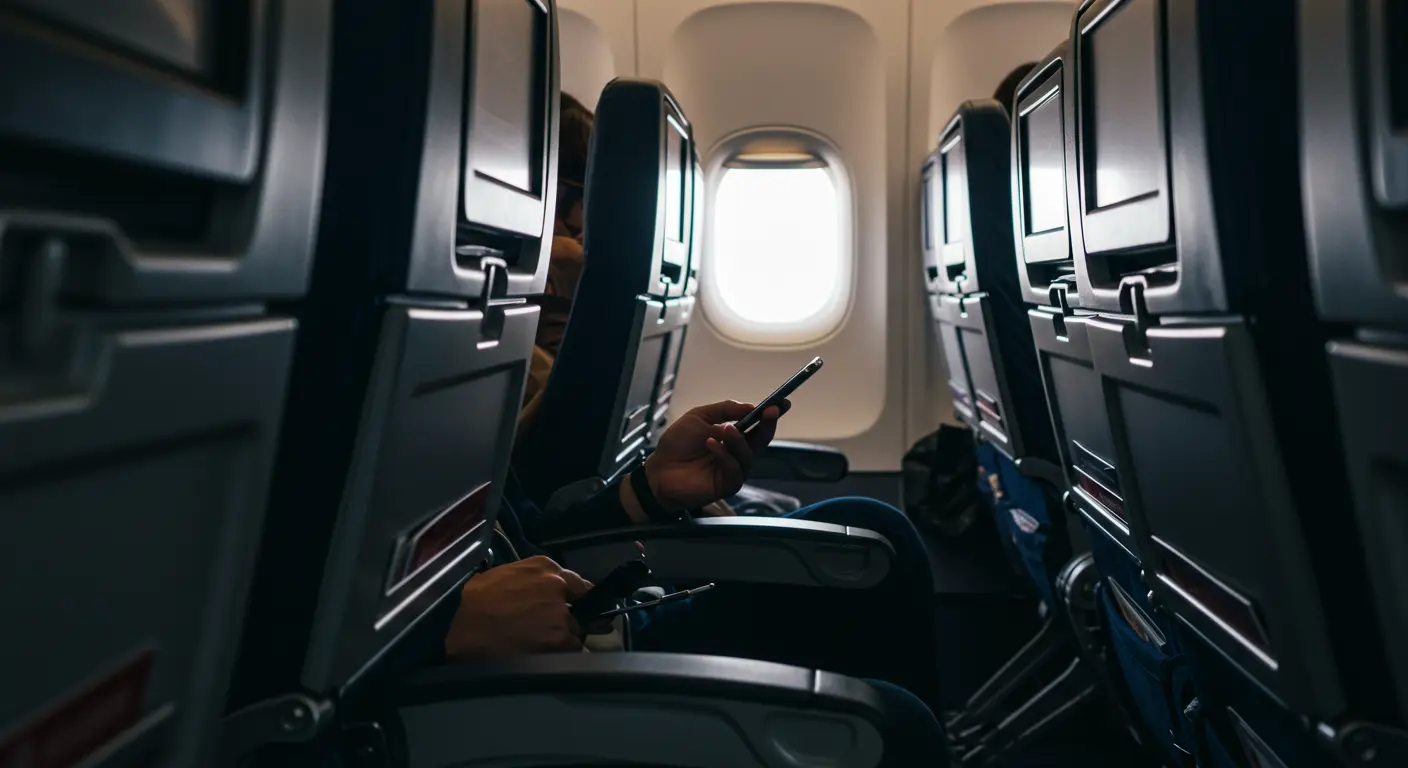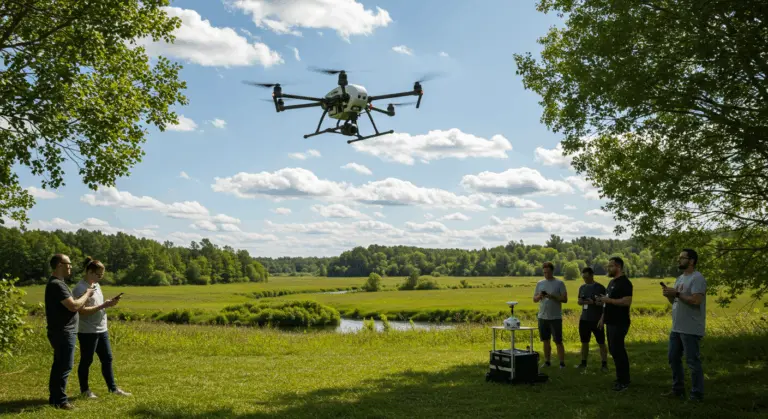Do You Have to Have Airplane Mode On the Whole Flight? – Explained
Airplane mode functions by completely disabling your device’s transmission capabilities, preventing the emission of radio waves that might interfere with sensitive aircraft equipment. Once activated, your phone ceases its continuous search for cellular towers—a process that becomes particularly taxing at cruising altitude, where your device amplifies its signal strength in attempts to reach distant ground-based towers.
The main concern is potential interference with critical aircraft navigation and communication systems. Even minimal radio frequency interference can multiply when multiplied across dozens—or hundreds—of passenger devices, potentially disrupting the plane’s delicate electronics. Pilots frequently report a buzzing or crackling in their headsets—interference directly traceable to cell phone signals—that can mask vital communications during critical flight phases.
While modern aircraft have sophisticated electromagnetic shielding, the aviation industry takes a cautious approach. The potential risk, however minuscule, outweighs the trivial inconvenience of activating airplane mode. This precautionary philosophy explains why the requirement remains universal practice on flights worldwide—safety comes before connectivity.
How Airplane Mode Prevents Interference
Airplane mode creates a digital silence by disabling your device’s wireless transmissions—cellular, Wi-Fi, and Bluetooth alike. This eliminates the emission of radio waves that could potentially disrupt sensitive aircraft systems, particularly navigation and communication equipment that pilots depend upon.
The primary concern involves cumulative radio frequency interference from numerous passenger devices. A single phone produces negligible interference. Hundreds of active devices? The situation changes completely. Pilots consistently report that cellular signals generate audible buzzing or static in their headsets—interference that can mask critical communications when clear communication is essential: during takeoff and landing.
Aviation authorities take a precautionary approach. Though modern aircraft have strong electromagnetic shielding, the potential consequences of system interference remain severe. Mandating airplane mode establishes a standardized safety buffer, ensuring critical flight systems operate without electronic interference from passenger devices.
What Happens If You Don’t Use Airplane Mode?
Neglecting to activate airplane mode leads to several problems:
-
Potential Safety Risk: Your device’s signal contributes to the cumulative electronic noise that can interfere with the aircraft’s communication and navigation systems.
-
Legal Penalties: Disobeying crew instructions to enable airplane mode violates aviation regulations and can result in fines or other legal action.
-
Rapid Battery Drain: Your device will constantly search for cellular towers, quickly draining its battery without establishing a stable connection.
-
No Cellular Service: You will be unable to make calls, send texts, or use mobile data.
Potential Disruptions to Flight Safety
Modern aircraft have strong electronic systems, yet passenger device signals can still potentially interfere with critical aircraft operations. This interference, though typically minor, creates a real safety concern. The most frequent issue? Distracting background noise infiltrating pilots’ headsets—a problem that is especially problematic during takeoff and landing, when crystal-clear communication between pilots and air traffic control is essential.
These critical flight phases demand flawless communication clarity between pilots and ground control. Even minor signal interference that introduces static or buzzing into communication systems can compromise safety by obscuring instructions or making them difficult to interpret.
Aircraft navigation and communication equipment operates on precisely calibrated radio frequencies that can experience unwanted signal overlap from consumer electronics. While catastrophic interference remains unlikely, the aviation industry maintains strict airplane mode requirements as a preventative safeguard—following a “better safe than sorry” approach when passenger safety hangs in the balance.
Can You Use Wi-Fi and Bluetooth in Airplane Mode?
Many passengers find that airplane mode doesn’t mandate complete wireless isolation—modern devices offer considerable flexibility in this regard.
Once airplane mode is activated, you can selectively re-enable Wi-Fi and Bluetooth while keeping the cellular radio firmly disabled. This is useful for connecting to onboard Wi-Fi networks or pairing wireless headphones.
Most airlines allow Wi-Fi and Bluetooth usage at cruising altitude, since these technologies operate on distinctly different frequencies from cellular signals and present minimal risk to aircraft systems.
Always heed the flight crew’s specific instructions, though, as policies governing when these features can be activated—especially during the critical takeoff and landing phases—vary considerably between airlines.
Emergency Calls in Airplane Mode
Airplane mode’s most significant limitation is that it completely disables of all calls—including emergency services—by blocking the device’s cellular radio entirely.
During a genuine in-flight emergency, immediately alert the cabin crew, who possess specialized training and equipment to handle such situations, rather than attempting to use your phone.
The inability to place emergency calls while in airplane mode shows why following flight crew instructions regarding device usage remains crucial. Typically, you’ll receive instructions to maintain airplane mode until the aircraft has completely landed and reached the gate—or until the crew explicitly announces that cellular services can be safely reactivated.
Are There Exceptions to Airplane Mode Rules?
In the United States, the Federal Aviation Administration (FAA) mandates airplane mode usage throughout the entire flight for all passengers, with almost no exceptions.
While airplane mode requirements remain consistent, passengers can take advantage of one option: in-flight Wi-Fi. Once the aircraft reaches cruising altitude and Wi-Fi service becomes available, passengers can connect to this network while maintaining airplane mode.
International regulations vary slightly. In Europe, for instance, ongoing discussions focus on 5G network compatibility with aircraft systems. Certain European 5G networks operate on frequency bands deemed less likely to cause aviation equipment interference—a technological distinction that might lead to for more relaxed regulations in specific regions, though no significant policy changes have occurred.
Medical devices requiring wireless connectivity represent a rare exception, requiring airline approval well in advance of travel—these unique situations receive individual case-by-case evaluation.
Future of Airplane Mode Regulations
While airplane mode currently remains standard protocol, the regulations governing its use may evolve as technology advances and the FCC revises its guidelines.
Some newer aircraft have technology designed to safely accommodate mobile device usage, but these make up only a small portion of the commercial fleet, airplane mode remains mandatory on the vast majority of flights.
Several factors could influence future regulations:
-
Continued research into the impact of device signals on modern aircraft.
-
Development of new aircraft with enhanced protection against electronic interference.
-
Advancements in mobile technology that reduce signal conflicts.
-
Pressure from consumers and airlines to enhance the passenger experience.
The European aviation sector has already begun exploring more flexible approaches, particularly concerning 5G technology. As previously noted, certain European 5G networks operate on frequency bands that pose reduced interference risks to aviation equipment.
For the foreseeable future, however, passengers should anticipate continued airplane mode requirements during flights. The aviation industry’s strong commitment to safety means any regulatory changes will unfold gradually, following extensive testing and validation.







